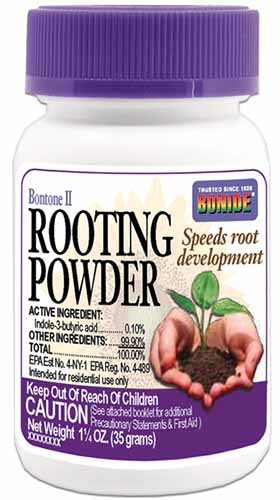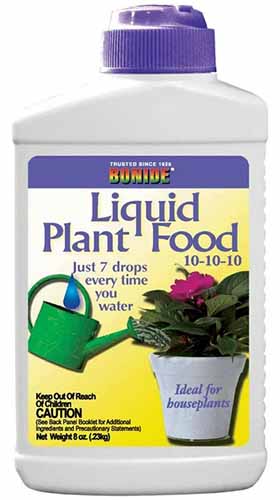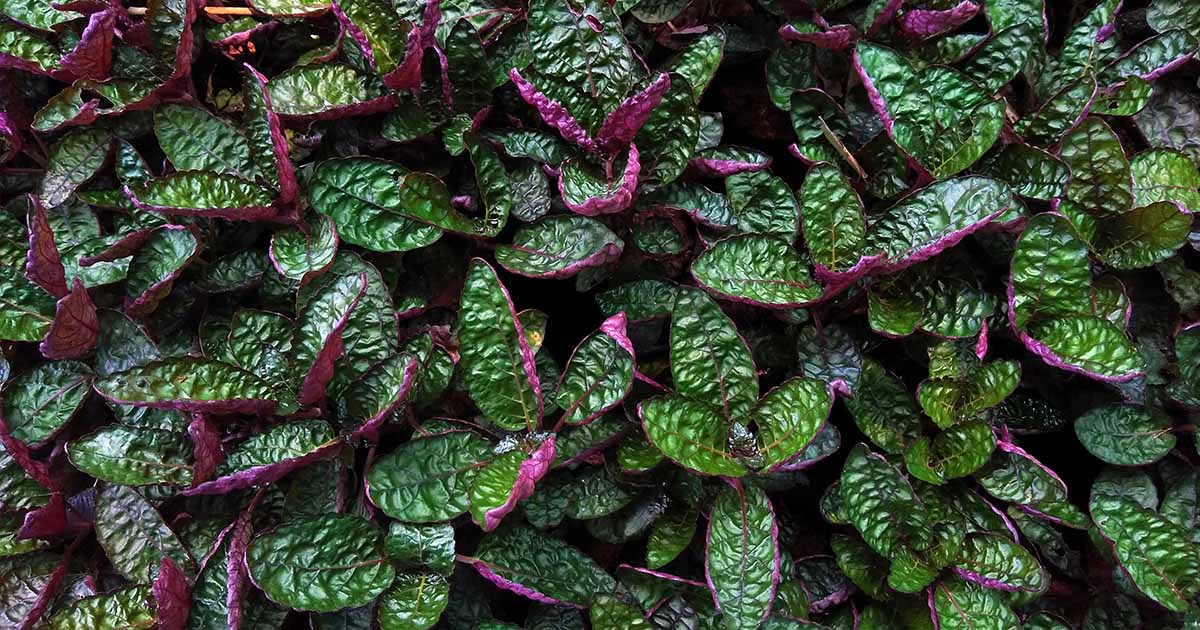
Strobilanthes alternata
In the case of many plants, crinkled leaves are a sign that something’s wrong. But for the waffle plant, it’s just par for the course, and delightfully so.
Flaunting colorful leaves with a waffle-like texture, Strobilanthes alternata is a wonderful option for when you want something different from the standard green, smooth foliage of many other houseplants.
And while it doesn’t taste all that great – even with berries, whipped cream, and syrup – a waffle plant can definitely make you smile like a warm plate of homestyle Eggos does.
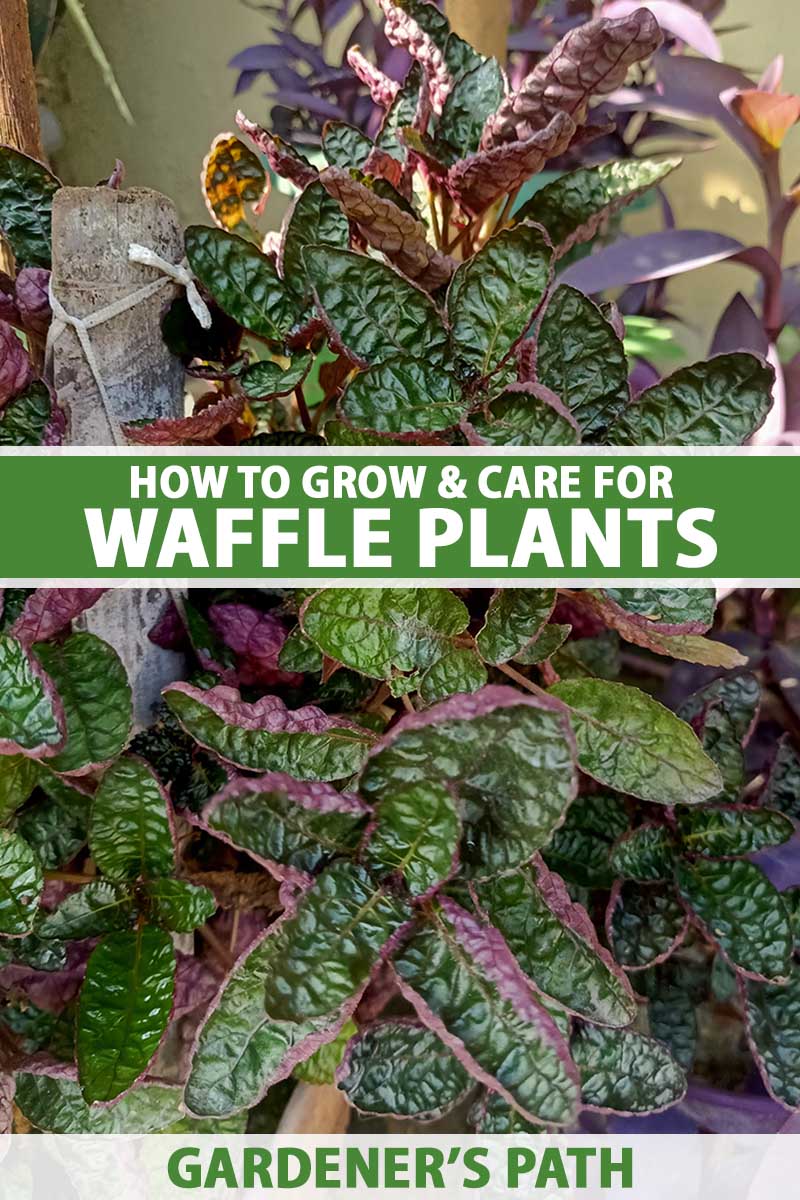
We link to vendors to help you find relevant products. If you buy from one of our links, we may earn a commission.
Beautiful, compact, and easy to care for, the waffle plant is a worthy addition to your houseplant collection. And with the proper TLC, they’ll look their absolute best for a good long while.
With this guide, you’ll know exactly what to do to make this happen. Propagation, cultivation, health care – all the know-how you need can be found right here.
Here are the specifics:
What Are Waffle Plants?
Also known as the purple waffle, red ivy, metal leaf, metallic, or cemetery plant, the waffle plant is an herbaceous tropical perennial from the Acanthus family.
It’s commonly found growing in dense carpets underneath the canopies of larger trees.

Hardy in USDA Zones 10 to 11 and originating from Indonesia, India, and Malaysia, the waffle plant is also known by its older name Hemigraphis alternata in some botanical circles, although it has technically been reclassified as Strobilanthes alternata.
This species is used to growing in the damp and shady understories of tropical forests, where they receive dappled light that filters down through the canopy.
As a result, the leaves have evolved to catch all the light they can.
Oppositely-arranged, these simple leaves are oval to heart shaped and “puckered” in texture, with scalloped margins and a metallic sheen.
They’re typically dark green up top and dark purple below, although this can vary a bit in surprising and delightful ways.
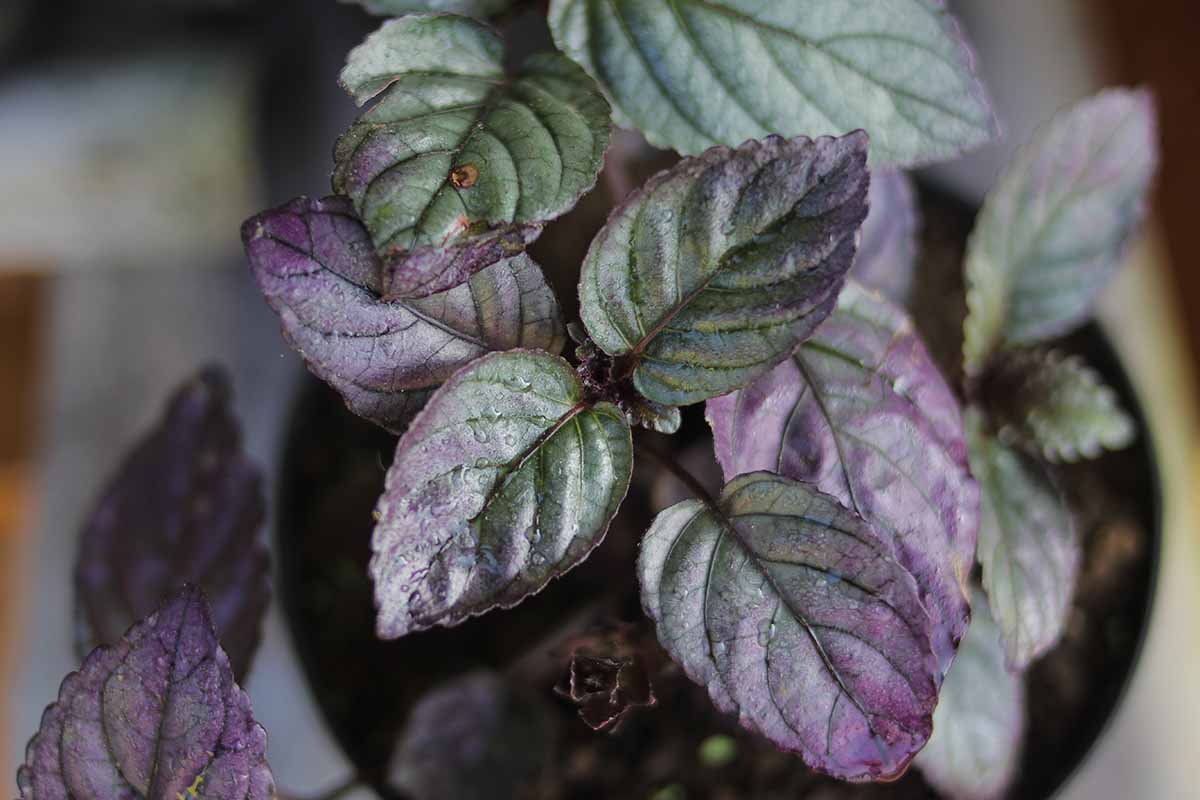
Growing six to nine inches tall and 12 to 18 inches wide at maturity, waffle plants make wonderful ground covers when grown in-ground, as they spread profusely with their purple, prostrate stems.
Whether in pots, hanging baskets, or rectangular planters, this lateral spreading fills out containers quite nicely.
In spring or summer, waffle plants bloom with small, five-lobed, bell-shaped flowers on one-inch racemes. While some consider them visually insignificant, I think the blooms are an aesthetic treat.
Cultivation and History
As you can imagine, a significant spreader such as S. alternata gets around with the vigor and enthusiasm of The Beach Boys.
Thanks to human introduction and commercialization, the waffle plant can be found growing as ornamental plantings in tropical and subtropical regions of North and South America, Asia, India, and the Indian and Pacific Islands.
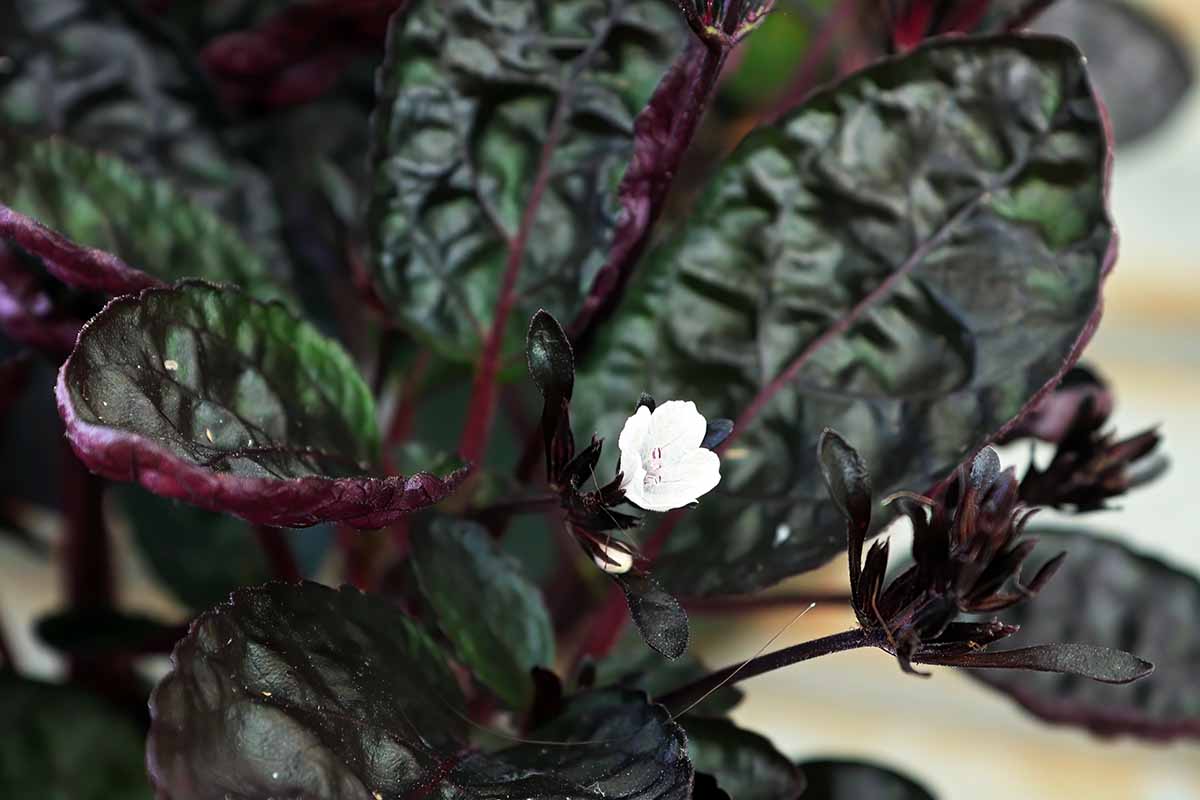
On many occasions, waffle plants have actually escaped from cultivation and become naturalized in their new homes.
They can spread out of their placement sites in the garden, or when gardeners dump the leaves and stems as garden waste – these structures can easily start growing as new specimens.
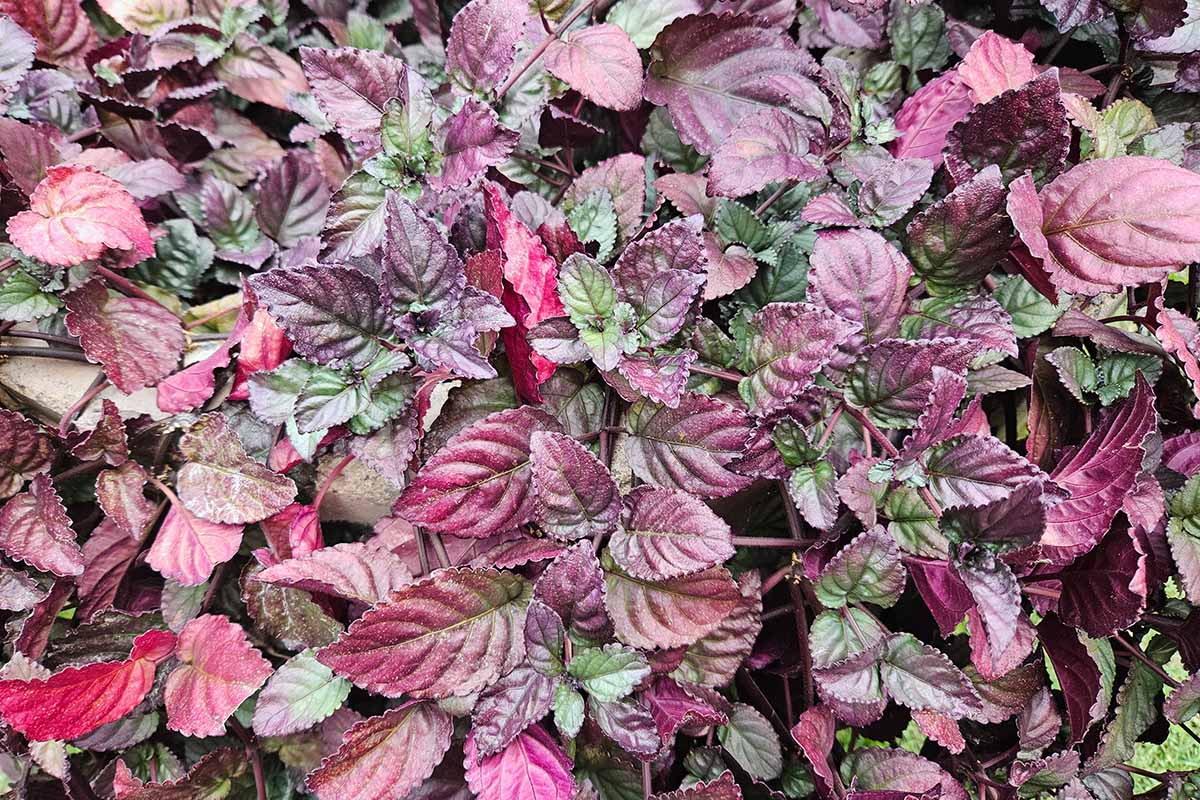
Often displacing native flora, S. alternata is classified as invasive in the Dominican Republic, Hawaii, the Cook Islands, Fiji, French Polynesia, Samoa, Chagos Islands, Reunion, Niue, Palau, and Tonga.
In folk medicine, the leaves of waffle plants are used to treat anemia, dysentery, hemorrhoids, and gallstones, and are also used as a sterility-inducing contraceptive.
But S. alternata is definitely more popular in ornamental gardening. And as a houseplant, it packs the beauty without its potential to spread throughout your yard and become an ecological problem.
Waffle Plant Propagation
Waffle plant seeds are tough to collect from indoor specimens, so seed sowing isn’t a common propagation method among houseplant growers.
You’d have much faster and more reliable success if you were to take stem cuttings or simply transplant a juvenile specimen.
From Cuttings
In early spring, use a sharp, sterile blade to take four- to six-inch cuttings from healthy-looking waffle plant stems. Make sure that each cutting has at least one node on it.
Remove the foliage from the lower half of each cutting, and dip the cut ends in a rooting hormone such as Bonide’s Bontone II IBA powder, available at Arbico Organics.
Bonide Bontone II Rooting Powder
Prepare a three- to four-inch container for each cutting you took, and fill them with a 50:50 mix of a well-draining substrate like perlite and a moisture-retentive substrate such as peat moss.
Stick the cuttings halfway in the media, moisten it, and set the containers where they’ll be exposed to bright, indirect light.
Humidify each cutting with a covering of clear plastic, whether it’s a jerry-rigged plastic baggie or individual humidity domes, like this 10-piece set of four-inch containers with accompanying plastic domes, available on Amazon.
Nursery Pots with Humidity Domes
Keep the media consistently moist as the cuttings root. Once you see new growth above the soil line as an indication of rooting, you can remove the plastic coverings.
This can happen rather quickly: just seven to 10 days after planting your cuttings!
Keep up the care until the cuttings outgrow their containers. At this point, you can transplant them into more permanent homes.
Transplanting
Whether you have well-developed cuttings or a nursery start in need of a new pot, transplanting is just what the doctor ordered.
Prepare a well-draining pot that’s a couple of inches wider in diameter than the root system, as the goal is to provide the roots with at least an inch of elbow room on all sides.

Fill the new pot with well-draining, yet moisture-retaining media, then create a hole wide and deep enough to accommodate the transplant’s root system.
Remove the transplant from its original container, lower it in its new one, backfill any gaps in the hole with the dug-out media, then water in your transplant.
Place the container in bright, indirect light, set a saucer under the container to catch any water that runs off, and you’re done!
How to Grow Waffle Plants
Once you’ve got an established S. alternata, caring for it is as easy as (waffle) pie!
Climate and Exposure Needs
As mentioned earlier, bright, indirect sunlight is essential for S. alternata to thrive, as its leaves evolved to absorb all the indirect light they can snatch from underneath the dense canopies of larger trees.
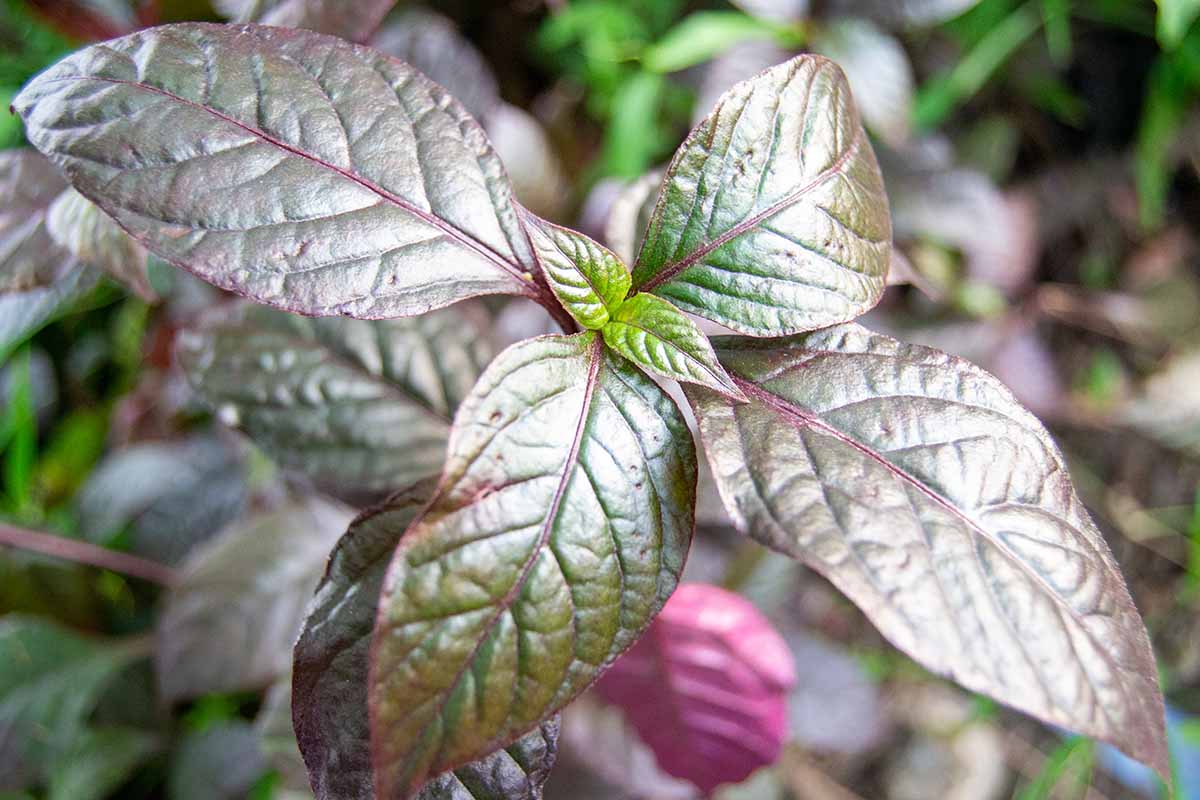
Temperature-wise, 50 to 80°F is an acceptable range. Aim to hover around that Goldilocks value of 65°F, and you’re golden.
Since waffle plants like humidity, you can provide this by grouping them with other houseplants, placing a humidifier nearby, or setting them onto a tray of pebbles that are partially submerged in water, i.e. a humidity tray.
Bathrooms tend to be pretty humid locations, as well, especially if you shower often and keep the toilet lid up. The lid, not the seat – you learn that the hard way, growing up with sisters.
Soil Needs
A combo of both moisture retention and drainage are essential for a waffle plant’s soil, along with a pH of 6.0 to 7.0.
Ensure that the growing media is organically-rich as well, and you’ve got yourself some fertile ground for S. alternata to thrive.
Miracle-Gro Tropical Potting Mix
Need some soil? Try this six-quart bag of tropical potting mix from Miracle-Gro, available on Amazon.
Water and Fertilizer Needs
As a species that’s used to growing in the damp and shady understory of tropical forests, S. alternata has a preference for consistently moist – yet not soggy – soils.
This means watering whenever the soil’s surface feels dry to the touch, but no sooner.
Monthly applications of a balanced fertilizer throughout the spring and summer will keep your waffle plant well-fed and happy.
Try this liquid 10-10-10 fertilizer from Bonide, available from Walmart.
Growing Tips
- Provide bright, indirect sunlight.
- Make sure the growing media is moisture-retentive, yet well-draining.
- Add water whenever you feel that the surface of growing media is dry.
Pruning and Maintenance
The waffle plant is a low-stress houseplant that’s easy to maintain – perfect for the laissez-faire plant parent.
Repot whenever the root system has less than an inch of room on all sides. If the roots start sticking out the container’s drainage holes, then swift repotting becomes absolutely essential.
The leaves and spreading stems of S. alternata should be trimmed as needed to keep them compact and contained. Feel free to pinch budding blooms or growth tips to encourage bushiness.
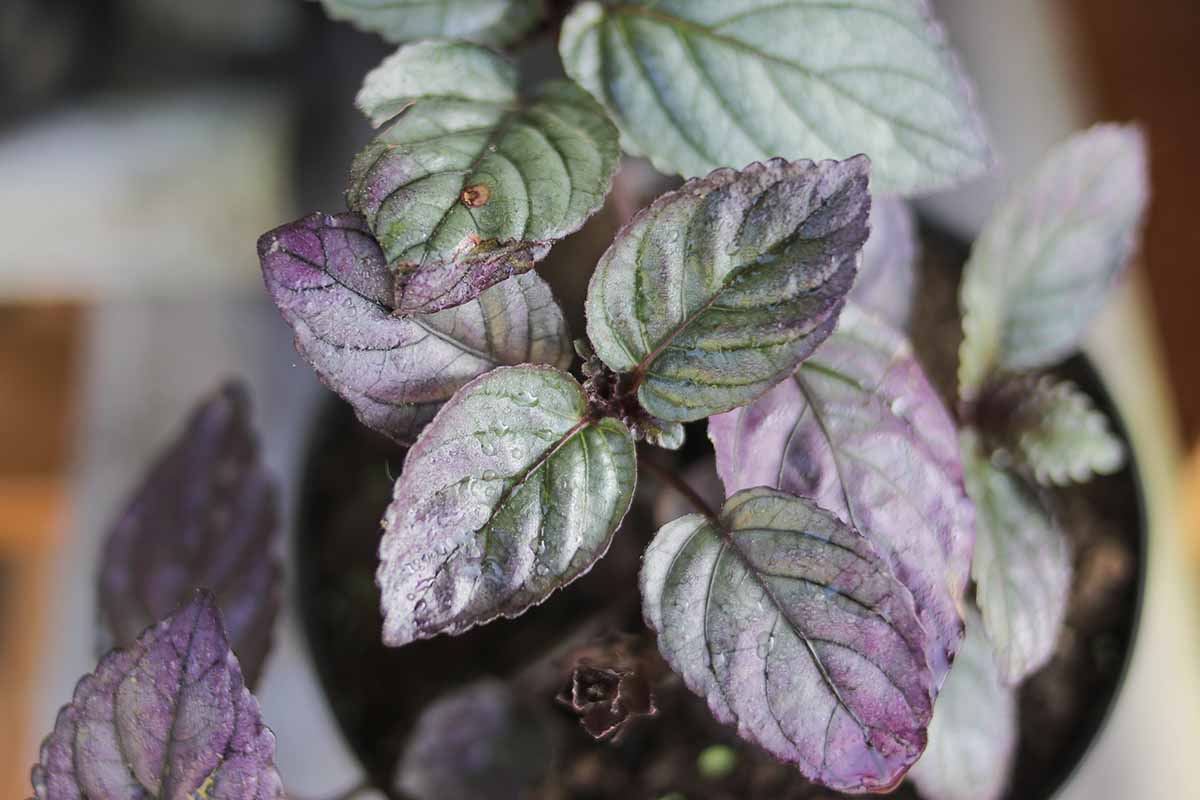
Additionally, any dead, sick, diseased, or damaged leaves should be pruned whenever you notice them.
During the dormancy period of fall and winter, water needs will be significantly lessened, so make sure to keep your irrigation frequency flexible, even if you’ve gotten used to your specimen needing a drink at particular intervals.
Waffle Plant Cultivars to Select
If you thought a regular, run-of-the-mill S. alternata was the only variety of waffle plant available, prepare to have your world rocked.
Although the standard species is quite lovely – and is available from Wekiva Foliage via Walmart – there are a handful of cultivars that warrant your attention.
Belgian Waffle
Just like the taste of a Belgian waffle blows your standard waffle out of the water, ‘Belgian Waffle’ can put a regular waffle plant to shame.
Flaunting medium green leaves with creamy yellow margins of an irregular shape and thickness, ‘Belgian Waffle’ measures six inches tall and 12 inches wide at maturity.
More compact, colorful, and beautiful… props to whoever came up with the cultivar name, it’s right on the money!
Red Flame Ivy
It’s Opposite Day! Or you’ll at least think so, after laying eyes on ‘Red Flame Ivy.’
Similar to the standard species in size and form, this variety distinguishes itself with its flipped leaf colors: purple up top, green beneath. Proof that going against the current can result in success.
Snow White
Much like its namesake, ‘Snow White’ is strikingly beautiful, the fairest in all the land. But unlike the Disney character, you don’t have to be a hot prince to end up with ‘Snow White.’ What a relief!
Coming in at a compact six inches tall and 12 inches wide, this variety has very light green leaves, which also sport a delightful white and pink variegation.
These fair hues are a nice departure from the darker greens and purples of the standard species, in my opinion.
Managing Pests and Disease
Thankfully, indoor gardeners don’t have as many pests and diseases to worry about as their outdoor counterparts, especially if they keep their homes somewhat clean.
But as many houseplant parents have found out the hard way, issues can still occur indoors. Let’s talk about how to manage the ones most often afflicting S. alternata!
Insects
Even when they’re not consuming your houseplants, having a bunch of bugs in the home is no bueno. Let’s discuss how to manage them!
Aphids
A familiar foe for veteran green thumbs, aphids are small, translucent, and soft-bodied insects that extract sap from plants with their piercing-sucking mouthparts, which can cause chlorosis, leaf distortion, and stunted growth.
Additionally, aphids excrete honeydew as they feed, which can collect on stems and foliage and result in the formation of black sooty mold. Plus, if you happen to be close enough to notice, a dense infestation of crawling bugs isn’t the best look.
These pests also suck vital fluids from plants, Capri-Sun-style, leaving infested specimens with chlorosis, wilting leaves, and stunted growth.
They also excrete that pleasant-sounding, yet nasty honeydew as they feed, which can lead to black sooty mold. Plus, large groups of scale can build up in conspicuous, irritating bunches, like clusters of moles growing in your skin creases.
Sprays of horticultural oil and insecticidal soap will kill scale insects, while a flat, hard edge like that of a butter knife can be used to physically scrape them off.
For more scale control pointers, give our guide a read.
Whiteflies
Despite their white and fly-like appearance, whiteflies are actually more closely related to aphids and mealybugs than the true flies that hover around fresh-cut fruits.
Soft-bodied, tiny, and triangular in shape, whiteflies feed with piercing-sucking mouthparts too, leading to chlorosis, leaf curling, and leaf drop.
They also excrete honeydew, which naturally comes with the associated sooty mold.
Horticultural oil and insecticidal soap applications can kill these pests via direct contact, while yellow sticky traps should attract any nearby whiteflies.
For the latter, Gideal offers a 20-pack of dual-sided yellow sticky traps via Amazon.
Need more whitefly control tips? Check out our guide.
Root Rot
Root rot is an abiotic condition that often occurs in oversaturated soils.
When roots don’t receive enough oxygen, they suffocate and become necrotic, which causes wilt, discoloration, and general decline above the soil line.
Preventing root rot is as simple as providing ample drainage and not overwatering from the get-go.
To reverse root rot, you will need doing those things immediately you notice symptoms, along with unpotting the specimen and pruning away any rotted roots.
But if more than half of the root system is rotted away, then the plant’s chances of survival are more grim than hopeful.
Best Uses for Waffle Plants
Whether you set it in a pot or a hanging basket, the waffle plant’s aesthetic strengths are its crinkly leaves and dark purple colors.
Therefore, putting it next to smooth-textured and more stereotypically green specimens should provide a nice visual contrast.
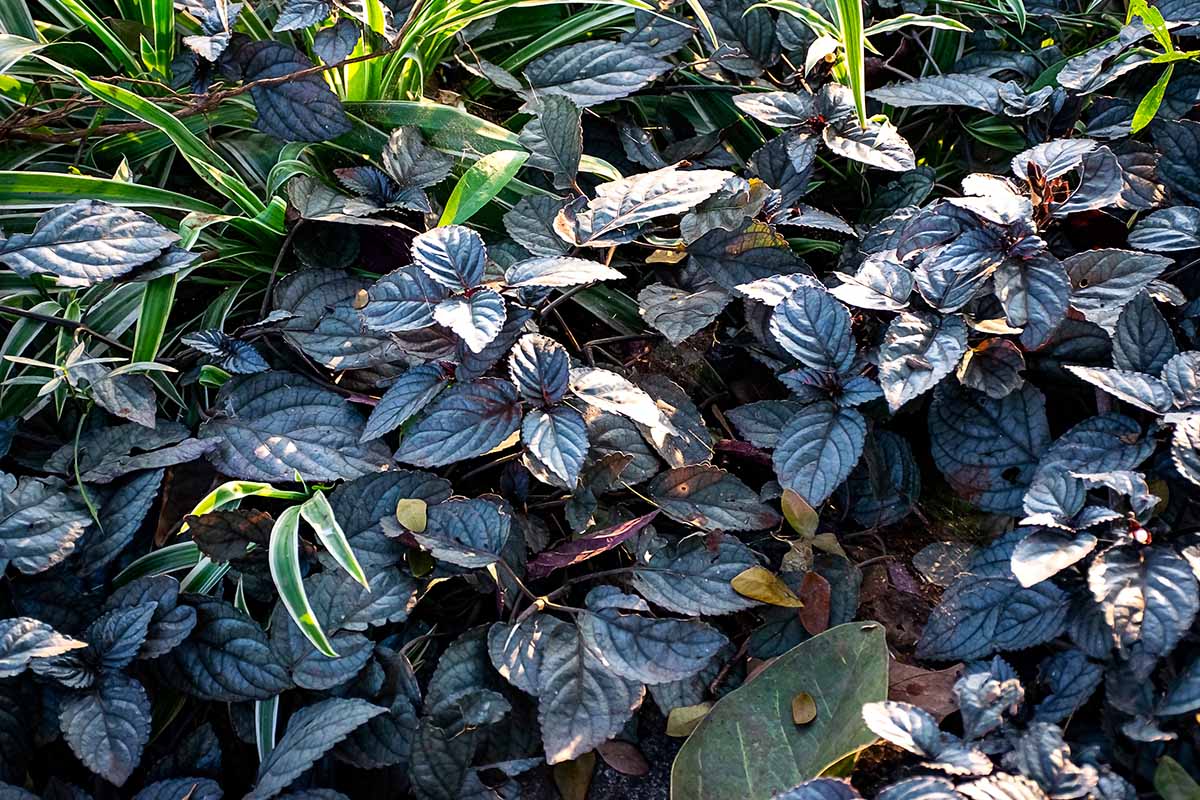
Its tropical look and love of humidity actually makes S. alternata a wonderful terrarium planting, if you keep it small enough.
Quick Reference Growing Guide
| Plant Type: | Herbaceous perennial | Flower/Foliage Color: | White/green to purple |
| Native to: | Indonesia, India, Malaysia | Water Needs: | Moderate |
| Hardiness (USDA Zone): | 10-11 | Maintenance: | Low |
| Bloom Time/Season: | Spring-summer | Tolerance: | Drought, shade |
| Exposure: | Bright, indirect light | Soil Type: | Moist, rich |
| Time to Maturity: | At least 1 year | Soil pH: | 6.0-7.0 |
| Spacing: | Root ball 1 inch away from container edges | Soil Drainage: | Well-draining |
| Planting Depth: | Depth of root system (transplants) | Uses: | Ground cover, hanging baskets, houseplants, terrariums |
| Height: | 6-9 inches | Order: | Lamiales |
| Spread: | 12-18 inches | Family: | Acanthaceae |
| Growth Rate: | Slow | Genus: | Strobilanthes |
| Common Pests and Diseases: | Aphids, scale, whiteflies; root rot | Species: | Alternata |
Don’t Waffle on the Waffle Plant
It’s easy to be indecisive, especially with all the different houseplants vying for room in your home. But you’ll definitely want to put S. alternata towards the front of your growing queue!
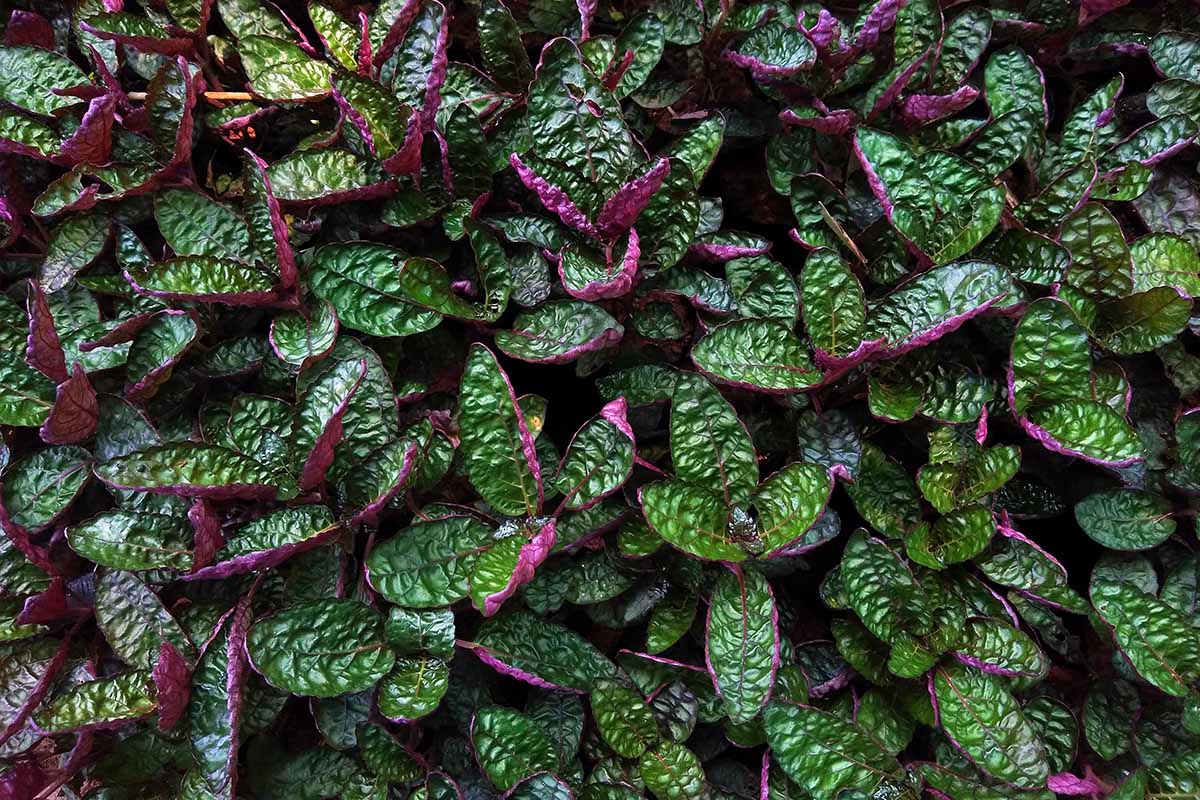
Their beautiful leaves and ease of care make growing waffle plants quite enjoyable. So be sure to pick up one or two and get the fun times rolling.
Curious about other aspects of waffle plant care? Have some hard-earned wisdom of your own to share? The comments section awaits!
Want to grow some other green-and-purple houseplants? Check out these guides next:
